#maori fiction
Text

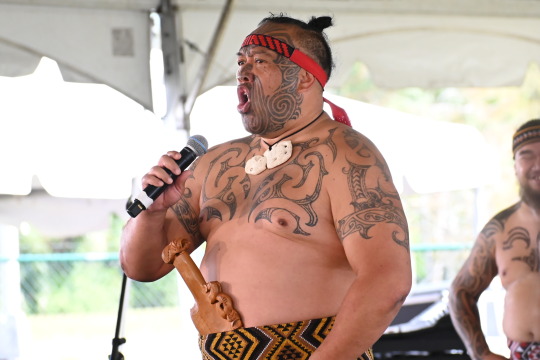


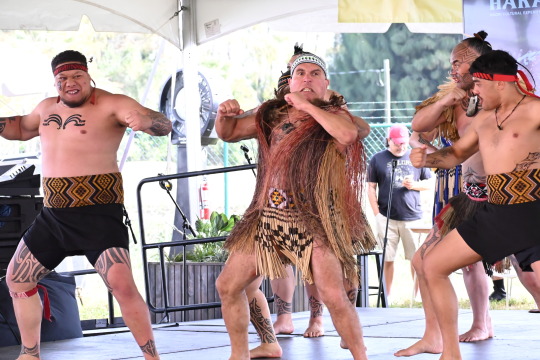
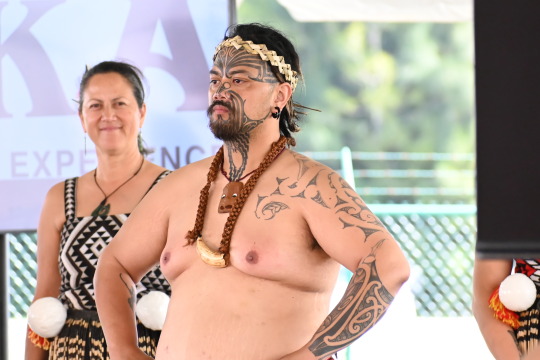
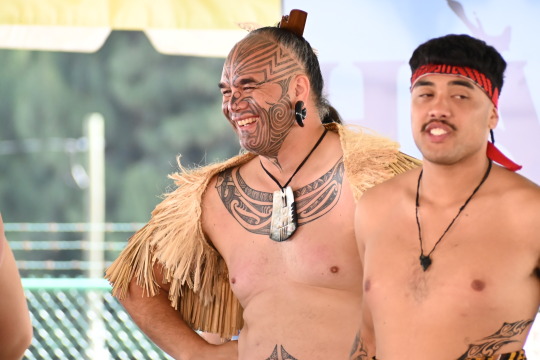

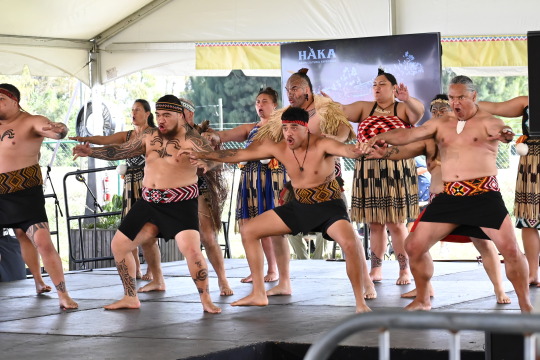

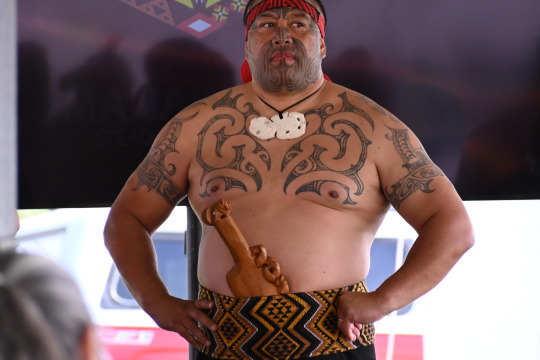
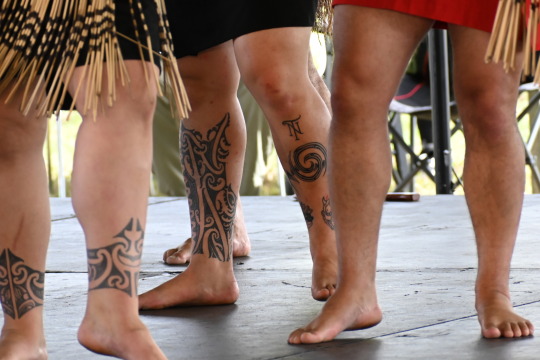

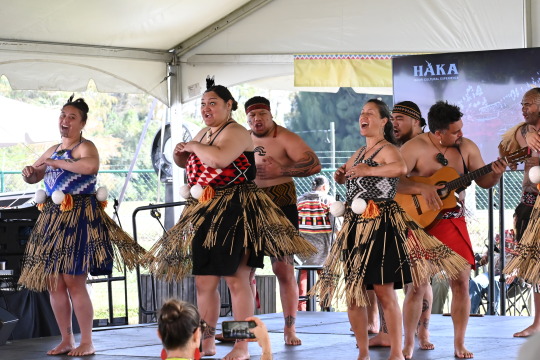
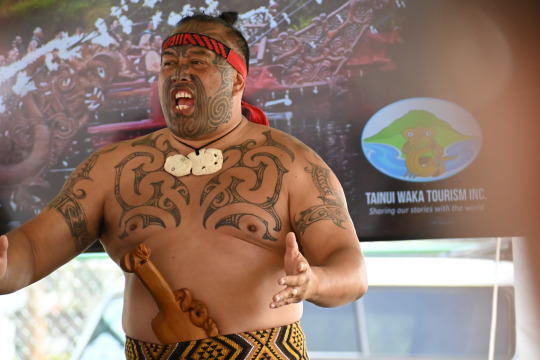



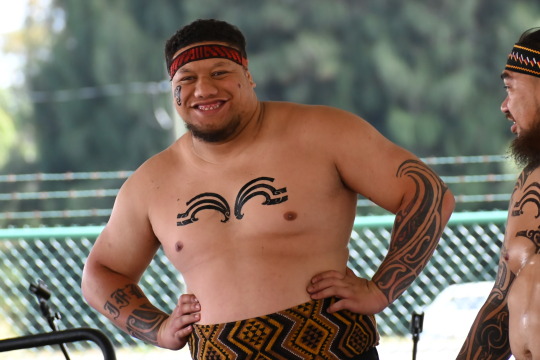

Some photos from a recent Indigenous culture arts festival, which include various performances from HAKA Māori Cultural Experience. My first time witnessing a live haka ceremonial dance; both beautiful and terrifying. Amazing harmony, too. Lovely people.
#writeblr#writing#culture research#haka#maori#maori culture#original photography#indigenous peoples#new zealand#waikato#aotearoa#writing advice#writing tips#fiction writing
10 notes
·
View notes
Text
Made for Regenerate game jam, 2022. 48 hours. Goal was to educate others on regenerative farming and Maori culture. Won first place.
#game dev#game development#game jam#game jams#indie games#twine interactive fiction#interactive fiction#if#solarpunk#intentional community#twine game#twine#twine if#new zealand#maori#Matikari
4 notes
·
View notes
Text
Residents of Proserpina Park is a fun and entertaining edutainment audio drama that teaches listeners about creatures from World Mythology and Folklore. This is my review.

Do you love mythology and folklore? Do you enjoy learning about mythical creatures in a fun and entertaining way? Do you like audio fiction? Well, then allow me to introduce you to @proserpinapark
Residents of Proserpina Park begins with a frame story. It begins with our unarmed narrator listening to some recordings that her brother gave her. They're made by a young woman named Alina, who is investigating rumors of a mysterious secret park, known as Proserpina Park. It's part of an assignment for journalism class. Alina found more than she bargained for. Turns out, Proserpina Park is a sanctuary for all the mythical creatures from across World Mythology and Folklore. Fortunately, she's not exploring the park alone. Alina meets a guy named Sam, who is something of a park resident himself. Each episode sees Alina learn more about the various creatures who call Proserpina Park their home.
I'd argue that, in many ways, Residents of Proserpina Park is an edutainment show. It sets out to tach listeners about different mythological creatures in a fun and entertaining way. Most episodes follow roughly same format; Alina will arrive at the park, meet Sam, and then Sam will tell her about a new creature, and explain the creature's origins and mythological significance. Usually, the recordings end right before Alina and Sam go to actually see the creature in question. Though, later episodes do shake up the format a bit. Alina starts exploring the park on her own, and bringing friends along, something Sam tells her she must never do. Some creatures, particularly the ones with human-level intelligence, do also make on-screen, for lack of a better way of putting it, appearances.
You get familiar creatures such as kappa or the Jersey Devil. However, you also get lesser known and more off the beating path creatures. For example, there’s the Aralez from Armenian Mythology. They're large dogs with feathery wings, and can heal people simply by licking them. There’s also the Bulgae. They're dogs from Korean Mythology who chase the sun and moon across the sky. When one of them bites the sun, it causes an eclipse.
Season 1 was absolutely fantastic. Episodes are typically about eleven or twelve minutes, so season one is easily bingeable. And I would strongly advise you to do so as quickly as possible if you haven't already.
Have to listened to Residents of Proserpina Park? If so, what did you think?
Link to the full review on my blog as always:
https://drakoniandgriffalco.blogspot.com/2021/08/the-audio-file-residents-of-proserpina.html?m=1
#audio drama#mythology and folklore#podcast#Residents of Proserpina Park#Mythology#Folklore#mythical beasts#mythical monsters#mythical creature#mythical creatures#magical creatures#audio fiction#audio drama podcast#Angela Yih#Mothman#jersey devil#korean mythology#armenian mythology#aztec mythology#maori mythology#Review#Audio Drama Review#podcast reviews#podcast review#urban fantasy#mystery#Proserpina Park#audio drama recs#podcast recommendations#fiction podcast
4 notes
·
View notes
Text
I feel like fandom at large needs the reminder that whitewashing is not just about skin tone (although, disappointingly, fandom still needs to be reminded that skin tones darker than "mild tan" exist). It's about non-white features too, lips and noses and eyes and hair etc etc; giving a character generic Anglo-saxan features and tossing a brown overlay on their skin does not actually do them justice. If you're an artist you need to diversify the faces you draw just as much as the skin tones.
#frankly it doesn't help the white characters either!#inspired by a very disappointing piece of Spinning Silver fan art I just saw#and also the copious amounts of fan art of Gideon Nav I've been ignoring#I know she wears face paint on the cover but. you guys. her brown arms are right there.#also Muir has been pretty upfront about her being Maori and describing her facial features in the third book#a bitter post by Dea#speculative fiction is my passion
5 notes
·
View notes
Photo







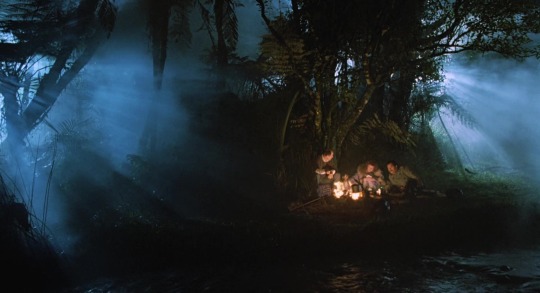
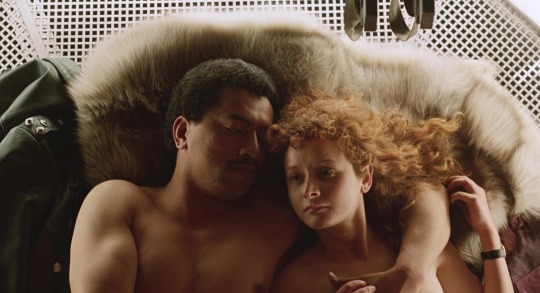
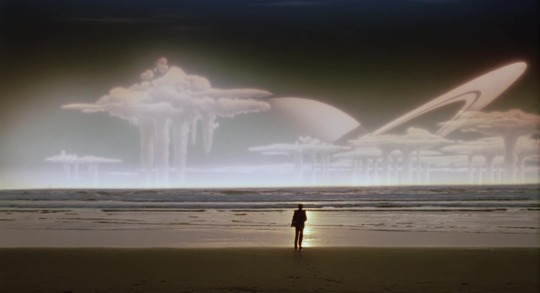
The Quiet Earth (1985, Geoff Murphy)
2/20/23
#The Quiet Earth#Geoff Murphy#Bruno Lawrence#Alison Routledge#Pete Smith#Anzac Wallace#80s#science fiction#mystery#New Zealand#post-apocalyptic#scientists#love triangle#other dimensions#experiment#Maori#loneliness#apocalypse#survival
6 notes
·
View notes
Text

#short story collection#short story collections#waiariki#patricia grace#maori lit#new zealand lit#new zealander lit#kiwi lit#20th century lit#english language lit#have you read this short fiction?#book polls#completed polls
0 notes
Text
I came here to catch up on some homework, but then I got distracted and while I now have a handful of really good scenes/plot points as well as outline for my novel.... I've only annotated two of three chapters of the Great Gatsby. The three chapters I have to finish by tomorrow. And a whole other stack of homework I really need to get through in an hour and a half.
Ethan and Victor are calling to me from Ititai Bay, New Zealand, and Reagan is desperate for a way out of the Grot Van LitchenStarren but I also need to not fail AP Lit
#homework#attempt at homework#writing#colors of veraldwiz#help#yell at me to do my homework#the great gatsby#(I really don't want to read/annotate it though)#original characters#original writing#fictional places#maori culture
1 note
·
View note
Text
REMAINS TO BE TOLD: DARK TALES OF AOTEAROA
Attention to all horror, spec-fic, short fiction, and @neil-gaiman fans (+ kiwi readers in general): Remains to be Told: Dark Tales of Aotearoa is launching 1st of October! And if you're in Canberra this weekend, you can still buy a Sunday ticket to Conflux where Lee Murray, Sharon Manssen, Lindy Cameron, Paul Mannering, Jacqui Greaves, and Tracie McBride will be launching the collection at 1.45pm.
Gaiman is obviously the biggest name but the collection brings together some outstanding award-winning authors, including Māori writers such as Tracie McBride, Dan Rabarts, and Bryce Stevens.
"Featuring uncanny disturbances, death, and the dank breath of the native bush, Remains to be Told: Dark Tales of Aotearoa is mired in the shifting landscape of the long white cloud, and deeply imbued with the myth, culture, and character of Aotearoa-New Zealand. Laced with intrigue, suspense, horror, and even a touch of humour, the book brings together stories and poems by some of the best homegrown and Kiwi-at-heart voices working in dark fiction today."
#neil gaiman#writeblr#spec fic#horror#māori#aotearoa#short fiction#lee murray#new zealand#pasifika#maori culture
0 notes
Text
PSA: Mana doesn't exist in Dungeon Meshi
Some translations of Dungeon Meshi (specifically the English anime and Yen Press manga) have used the word mana to describe magic, when the original Japanese simply said magic (mahou, 魔法) or magical power (maryoku, 魔力).
Ryoko Kui does not appear to use the word mana (マナ) at any point in the manga, the published extra materials, or her blog, so calling magic “mana” is an addition made only in some translations.
For example, the French translation does not use "mana." If you know of other translations that do or don't use mana, let me know!
The use of the word mana in English comes from Maori and its earlier Proto-Oceanic ancestor language.
It describes a form of supernatural power tied to social status, respect and strength. Mana is a religious concept for many Austronesian cultures, and is not really "magic" in the way pop culture has defined it.
As best as I can understand it from an outsider's perspective, mana is more like attributing a supernatural quality to a person's charisma, or the awe one feels when faced with a natural wonder like a mountain or the ocean, or the intimidation one feels when facing a powerful group.
The use of the word mana as a generic term to refer to magical power has been criticized as being cultural appropriation of a real religious term, still used by living people, to describe fictional magic.
In addition to this, using an Austronesian word at random in Dungeon Meshi for one of the most important and fundamental forces of the universe (magic) is inorganic to the world that Kui has constructed, which is rooted primarily in Greco-Roman, Hindu/Buddhist Indian, Middle Eastern, and Germanic cultures.
Using mana to refer to magic would suggest that the Ancient culture from before the cataclysm was Austronesian, but the rest of the manga does not support such an idea at all.
There are references to Austronesian and Oceanic cultures in Dungeon Meshi, but they are mostly tied to the orcs, who don't appear to use magic, and whose culture clearly doesn't, and has never had, the social power to define what word the rest of the world uses to refer to "magical power."
How did a Maori word get so popular in English?
The concept of mana was introduced in Europe by missionary Robert Henry Codrington in 1891 after he wrote a book about his time in Polynesia. The concept was then popularized further in America in the 1950s by Mircea Eliade, an extremely influential religious history scholar at the University of Chicago.
Mana was first introduced as a magical fuel used to cast spells in the 1969 short story, "Not Long Before the End", by Larry Niven. Around this time it also became popular with new-age religious groups.
It has since become a common staple in fantasy fiction and games.
So why translate it as mana?
The choice to translate "magic" and "magical power" as mana was probably made to try and make Dungeon Meshi sound more like a video game/RPG, since so many Japanese fantasy manga feature video game or RPG mechanics, and translators working on Dungeon Meshi would have no reason to assume it would be any different, especially at the very start of the manga.
However, Dungeon Meshi is much closer to High/Epic Fantasy, like Lord of the Rings, and throwing random gaming terminology into the translation when it wasn't in the original text ("mana", "newbs" and "inventory" instead of "magical power", "newcomers" and "supplies") feels out of place.
I think adding the term mana is a disservice to the hard work that Kui has done with her careful attention to linguistic detail and culture.
In the process of working on my Dungeon Meshi research paper on real world cultural references, I have studied over 100 names and words used by Kui, and I have found that she is remarkably thoughtful and consistent in what real world cultures and languages she pulls from, and what fictional cultures she pairs them with.
Obviously I don't blame the translators for not knowing this, they had to make translation decisions before the entire manga was complete, and most likely they were doing work for hire, with no idea what Dungeon Meshi was about.
They had no way of knowing Dungeon Meshi wasn't a video game fantasy comic, and were just trying to rush through their work as fast as possible in order to get paid, and move onto their next project.
Once it became apparent that Dungeon Meshi was High Fantasy and not a world that functions like a video game, they'd already used the word mana, so there was no going back.
In an ideal world, if the translators had known the type of story Dungeon Meshi would become from the beginning, if they really wanted a single word to translate "magical energy" into, they could have picked a word that belongs to one of the language families I mentioned before, rather than using mana just because "everybody uses mana, so readers will know what it means."
What should I call magic power then?
If reading all of this has made you want to stop calling it mana, hooray! Thanks for listening to me rant. You could just call it magical power, if you wanted. Nothing wrong with that!
But if you want something a little less clunky, here's an incomplete list of possibilities in some of the languages most commonly referenced in Dungeon Meshi. Please note I have not done due diligence on every one of these, I believe none of them are exclusively religious terms still in use, but just words that could mean magic (both fictional and real) in various languages. If I'm wrong about any of them, let me know.
INDIAN: Maya, prana.
MIDDLE EASTERN: Sihr, kiisum/kesem.
GRECO-ROMAN: Ergon (as a euphemism), goteia, physis, numen/numina, mageia.
GERMANIC: Seidr, galdr.
(This post is an excerpt from my Dungeon Meshi essay with additional elaborations.)
287 notes
·
View notes
Note
how do we know in the books that john is indigenous? can you say more about how his indigeneity is important to his story?
hello! so there is a word of god post on race (doesn't mention John but mentions that Gideon is "mixed Maori"), BUT I frankly don't think word of god statements are worth any weight without actual in-text support (see: the "dumbledore is gay" situation). SO!
Specific evidence that John Gaius is Maori, as revealed in Nona the Ninth:
When he is listing his education, John mentions having gone to Dilworth School (John 20:8). Dilworth is an all boys boarding school in Auckland and accepts students based on financial need instead of academic or sporting achievements. Demographics appear to be about 70% low income Maori boys, indicating that it is highly likely that John is Maori
John reports that P- said he looked like a "Maori-TV pink panther" (John 15:23) when his eyes turned gold. Maori TV is a TV station that is focused primarily on Maori culture & language revitalization, with presumably all or mostly Maori hosts, and tbh I don't see why P- would say this unless John was himself Maori
John uses a te reo Māori phrase ("kia kaha, kia māia") (John 5:20) when he is saying goodbye to the corpses in the cryo lab before the power is shut off. Though it is possible he said this as a non-Maori kiwi, but in combination with the previous two points of evidence I think this all very strongly points to him being Maori
He also renames his daughter Kiriona Gaia, "Kiriona" being just literally the name "Gideon" in te reo Māori
TLT is not a series that hands you anything on a silver platter but to ME this is all pretty solid proof
Why is this relevant to The Locked Tomb?
In Nona the Ninth, we learn that before he completed apotheosis and ate the solar system, John was basically trying to save the earth from capitalism-caused climate change. Climate justice and the rights of indigenous people over their own land are deeply tied together, in the same way that climate catastrophe and capitalism/ imperialism/ colonialism are linked. disclaimer that this is NOT my area of study and others have definitely said it better; this is just the basic gist as I understand it, but on quick search I found some sources here and here if you want to do some reading.
TLT is not a series that hands you anything on a silver platter, but i don't think it is a stretch to see John as an indigenous man trying to save the earth and getting ignored and shut down at every turn by primarily western colonial powers (PanEuro, the USA) who declare him a terrorist and then as a reader thematically connecting that to the experience of indigenous climate activists IRL
there are absolutely TLT meta posts that have discussed this before me; tumblr search is nonfunctional and I have been looking for an hour and a half and cannot find anything specific even though i KNOW i reblogged multiple posts about this in the first few weeks following NTN's release. sad & I am sorry
I think that by the time the books take place, John is 10k years removed from the cultural context he grew up in, with the Nine Houses having become a genocidal colonial power in their own right (with more parallels to be made between John's forever war for the resources of literal life energy and like, oil wars), but I also think that John Gaius is a fictional character who can represent and symbolize multiple different things in service of telling a story. (not to mention the potential thematic parallels being made to how oppressed people sometimes are pressed into replicating the power dynamics of their oppressors and continuing the cycle--now that is a tumblr post i KNOW i read last year and definitely cannot find right now, once again sad & I am sorry)
How Radical Was John Gaius, Really is a forum thread that was locked by the moderators after 234534645674564 pages of heated debate
#john gaius#nona the ninth#the locked tomb#tlt meta#i need to fix my tagging system fr#john meta#tlt thoughts#trb.txt#if anyone wants to add anything or correct anything PLS do so!!! i did my best hope this helps anon. this took me 2 hours
838 notes
·
View notes
Text
everyone can hate me for tjis but i started reading the locked tomb in 2018 so i have had more than enough time to realize i really find the fandom so so annoying and almost all my criticism for tm as a white author dipping her toes into writing about Maori people and their relations to colonialism have never been adressed after years and the fans still can only compare it to baru another speculative fantasy about colonialism written by a white author. the books are powerful but please i think there is something to be said of white authors making up genocides as allegories for real ethnic cleansings instead of simply platforming indigenous authors. i am willing to do a reread on baru to give it another chance and i love tlt. but i think a bit too much credit is given to Tamsyn Muir as an author for taking the typical approach of never confirming in text the race or ethnicity of her characters beyond a few vague mentions of skin tone and a tumblr post she made after the publication explaining things that should have been adressed straight on in the narrative.
and seth dickinson is clearly very educated and well-read but also my read of baru kind of had me thinking about how i never hear fans of the locked tomb raving about authors like Octavia Butler, Carmen Maria Machado, Andrea L. Rogers, Benjanun Sriduankaew, Jewelle Gomez or any other related fiction authors of queer stories born from their cultures and of their people.
as a white reader writer and creative, i want to encourage other white people to broaden your horizons and read lesbian and queer stories that weren’t written by white people and read new perspectives outside of your ethnicity. I have found deeper narratives that challenge colonialism here and without the need to invent fictionalized indigenous people and fictional brutalizations. Enough subtext ! Read something explicit!
#foxreads#the locked tomb#gideon the ninth#btw i am a years long fan of the series im not just trashing there is a lot to resonate with but also criticisms are necessary too
83 notes
·
View notes
Note
Recently there been a controversy with a game called Genshin Imapct with a region called Nathan's that is inspired by Pre Colombian Latin American civilizations, some Afrcian, Hispanic, and Aboriginal Australian cultures. And just recently they revealed their characters.

Mavuika and another character named Ororon.
Mavuika (sun glasses woman) is inspired by Mahuika a Maori fire goddes who is known to have a Moko on her chin




This is Ororon from Genshin

He inspired by Olorun an Orisha from Yoruba Tradition


This is also Olorun from Smite


Some are saying it's because of the censorship in China as stated in this post.
However there are two company's that have dark skin characters in their game and they arent being censored; Riot Games who created League of Legends and Valorant and Lilith Games who have created the AFK games and Dislyte (a game inspired by mythology gods and beings)
You can't scream anymore anti blackness and colorism than this!
The post you linked started off incredibly racist regardless of the context lmao. "Don't scream racism because you can't find a character with a skin colour like yours" then don't pull from YORUBA GODS, FROM NIGERIA! Like this isn't like Greek and Roman mythology, where we all fucking know who those people are thanks to the emphasis of these mythologies in a White Western-ran Classics field and in a white supremacist society that deems them worthy of a white connection. I could walk past 2000 white Americans and I can guarantee 1990 of them won't even know what an Orisha is 🙄
I'm sorry but I do not feel like sacrificing any more of my mental health reading further, that first bit pissed me off so bad ik I'm just gonna make myself angrier reading. Yeah it's textbook racism. This is a fictional world with magic and fairies and shit, so i get we're not worried about "geographic accuracy". But what would have been the issue with leaving them looking like the gods they were inspired by, if the island is supposed to be influenced by those real world religions? There wasn't enough skinny pale people in the game lmao?
This is also another one of those examples of how nonblack people of color really irritate me when it comes to solidarity. Because why are you caping so hard for whitewashing. 🙄
45 notes
·
View notes
Text
Radio 3 aired a whole hour+ programme of music and reading about and inspired by Antarctica.
If you call to mind an image of Antarctica, it is likely you will come up with something informed by the heroic but ultimately unsuccessful Endurance Expedition led by Sir Ernest Shackleton. That’s because the extraordinary photographs and film from that trip planted the so-called White Continent in our imaginations for ever. Shackleton, who was born in Ireland in February 1874 before moving to London as a boy, might be best known for that failed trip but the fact that his crew survived, when so many did not, is now seen as a credit to his exceptional leadership skills.
Today’s Words and Music is a tribute to the frozen landscape that inspired the heroic age of exploration. It is not just remote - it contains the world's highest, driest, coldest and windiest places. And these days it’s a hub of scientific discovery, international diplomacy and environmental change too. We’ll hear fiction from Beryl Bainbridge to Edgar Allan Poe, poetry from Samuel Taylor Coleridge to Derek Mahon, memoir from Jenny Diski and Sara Wheeler as well David Attenborough, Maori scientists and other Polar Explorers. Alongside you’ll hear hugely varied music inspired by Antarctica from Vaughan Williams to Tanya Ekanayaka, from The Muppets to Nigel Westlake and Cab Calloway. Our readers are Jessica Turner and John Lightbody.
#radio#media#music#shackleton#sara wheeler#beryl bainbridge#edgar allan poe#ralph vaughan williams#antarctica#poetry
54 notes
·
View notes
Text
Weekly tag Wednesday - The Google search edition!
Alright, roll call! @mybrainismelted @creepkinginc @spookygingerr @jrooc @gallapiech
@thepupperino @transmurderbug @blue-disco-lights
Thank you for the tags - let's get into it yuh
///
Name: For tonight, you can call me yours
Where in the world is Carmen Sandiego? (or you)?: Who has what kinda sand with Diego? I'm in the mountain land, my friend
Ok, so this week we are going to snoop into your google search. type in each phrase and tell us what the first suggestion is that google gives you!
What is the best way to… sleep. curled up in your ar--
Where can I… Saltburn. Not watched. Iffy if I want to or not.
How old is… Taylor Swift. Google says 34, but you never ask a lady her age.
How long does it take… to learn Norwegian? Forever and a day.
How many… songs can fit on a cd. It's for research. No need to know.
Who set the record for… the longest rock concert in the united states? Bruce Springsteen, apparently.
When did… the voting age change to 18 uk? Again, research.
What does it feel like to… get shot? I probably have googled that ngl
Can you… feel the love tonight. Sing it, Elton John!
When you… wish upon a star. Yeah, I know music.
Why do… we hear more about labor issues today? Really hope I get a good grade on this paper.
Is there a way… to save Karlach? Who now?
How old do you have to be… to have paypal? Idk.
Where do the… maori come from? Probably useful information one day.
What is the best time to… wake up? Easy. Never. Next question.
And to finish us off… What comes up when you type in Shameless? Shameless cigarette brand. Which are often Morleys, a fictional cigarette brand used in many different medias.
Do it (or don't, but still...) @spacerockwriting @transmickey @rayrayor @bawlbrayker @stocious
@sam-loves-seb @doshiart @heymacy @lee-ow
18 notes
·
View notes
Text
You know what? Given everything Australian and nearby, I kinda wished H2O explored the possibility of traveling to New Zealand and meeting a mermaid there.
Here's my logic: The rock responsible for the moon cave and moon crystals was so enormous that not only did it create the moon pool in Mako Island, it had several pieces or shards that broke apart all over the world as we come to know from Bella Hartley after she was changed in the Sea Caves of Ireland. So geographically, New Zealand is the closest to Australia and even closer to Mako Island (while fictional, I believe was an inspired combination of Tasmania and Matua Island in shape & landscapes). So wouldn't it be possible there's a sister moon pool in New Zealand somewhere? Even more - like the Little Mermaid in Copenhagen - in Napier, the North Island of New Zealand, they have their own mermaid of Maori mythology called Pania of the Reef.
(And given the lore surrounding her, Mako Mermaids fans can easily deduce Pania was an ancient, natural mermaid who fell in love with a human. However, unlike the Chinese Mermaid whose lover got turned into the Water Dragon, there's no happy ending because HE WAS AN IDIOT!)
So, logistically, could we have a New Zealander (a Maori to boot) who either got turned into a mermaid or knows something about mermaids?
23 notes
·
View notes
Text

So this last year, though I didn't read too much fiction, I read a lot of poetry, most of which was from poets I had never read before. Here are my favourite poetry books of those I read in 2023 (trigger warnings I noticed in the read more).
Bright Dead Things by Ada Limón (5/5)
An intimate, beautifully sincere look into a vulnerable space of life, loss, love, and lust. Limón expresses herself with exquisite language, without the aftertaste of pretence. I had never read Limón's work previously, but I will be looking at her back catalogue.
C+nto & Othered Poems by Joelle Taylor (4.5/5)
I had never read Joelle Taylor before; however, it became evident almost immediately that she is an extremely skilled and experienced poet and wordsmith. Taylor's writing is intentional and powerful, with times of both great beauty and brutality. The collection itself is centred around reflecting on butch counterculture.
Always Italicise: How to Write While Colonised by Alice Te Punga Somerville (4.5/5)
Always Italicised is a wonderful collection centred around a visually powerful concept of italicising foreign (non-native) words following the suggestion that foreign (non-English) words should be italicised in a fantastic act of malicious compliance. The primary focus is on colonisation and Te Punga Somerville's experience as a Māori writer and scholar in Aotearoa. Reflecting on the loss of language, the stigma and the historical oppression that Maori people have experienced/continue to experience as a consequence of colonisation.
The World Keeps Ending, and the World Goes On by Franny Choi (4.5/5)
This book has my favourite title of the year and the poetry lives up to it. My previous experience with Choi was in her spoken word work and I found this collection just as enjoyable, I listened to her narration on audiobook while reading along and found the poems to be beautifully reflective, personal, and rich in atmosphere.
Flèche by Mary Jean Chan (4/5)
Chan's short collection is complex and interesting, she mainly reflects on her relationship with her mother, and her experiences as a queer person of colour. The collection feels raw in a beautiful and occasionally painful way.
The Trees Witness Everything by Victoria Chang (4/5)
Another banger of a title. I really loved the imagery in Chang's writing. She writes with intent and skill which is obvious from the get-go. While I struggled to connect with this collection on an emotional level I still was in awe of it on a technical level.
Bright Dead Things by Ada Limón
Graphic: Grief, Death, Death of parent, and Terminal illness
Moderate: Animal death, Racial slurs, Xenophobia, and Racism
Minor: Alcoholism and Drug abuse
C+nto & Othered Poems by Joelle Taylor
Graphic: Hate crime, Death, Lesbophobia, Homophobia, and Violence
Moderate: Misogyny, Sexual assault, and Sexual violence
Always Italicise: How to Write While Colonised by Alice Te Punga Somerville
Graphic: Colonisation
Moderate: Racism
Minor: Miscarriage
The World Keeps Ending, and the World Goes On by Franny Choi
Graphic: Death, Xenophobia, War, Racism, Violence, Grief, Police brutality, Sexual assault, and Colonisation
Moderate: Sexual violence, Sexism, Suicide, Rape, and Police brutality
Flèche by Mary Jean Chan
Graphic: Homophobia, Lesbophobia, and Racism
Moderate: Mental illness and Self harm
The Trees Witness Everything by Victoria Chang
Moderate: Death
#poetry#poem#poetry book#favourite#favourites#poetry collection#list#book list#2023#book recommendations#poetry reading#poetry recs#poetry review#best of#best of 2023#best poetry#favorite
26 notes
·
View notes